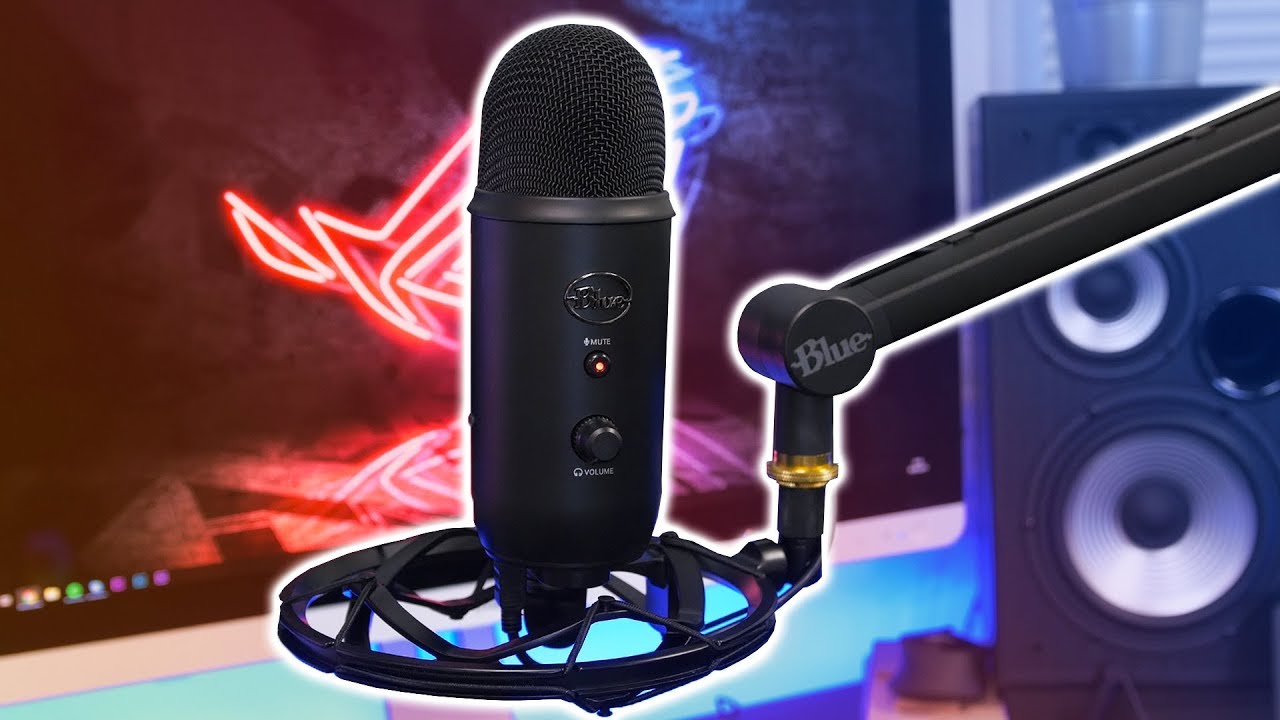
This is the review comparison between two well-known and popular brands. The comparison is between two microphones i.e. Blue Yeticaster and Rode Podcaster. Both have different features and designs. There are a day and night price gap between both the microphones. Performance-wise also both microphones are different. This review comparison will make it easy for you to decide which is worth the price.
 |  |
| Blue Yeticaster | Rode Podcaster USB Broadcast |
| BUY NOW | BUY NOW |
| PROS | PROS |
| Very little sibilance, but a pop filter is always recommended. Amazing sounding microphone. Stunning matt black color. Multiple recording patterns. Amazing performance. THX-certified sound quality. Record directly to your PC without an audio interface. Built-in volume and mute button right. Reliable and Sturdy. Zero-latency monitoring. Four polar patterns. | Provides a solid signal. Free 10-year warranty Zero-latency headphone jack. No DSP. Superbly built with an internal pop filter and shock mount. Solidly built Great upgrade from USB-based setups. Excellent sound: both crisp and rich. Available in XLR or USB option |
| CONS | CONS |
| Adjustment knobs and screws are not the easiest to turn. Not the strongest of builds. The instruction manual could be better. Desktop stand missing for Yeti. Sherpa software. | Expensive. Gain knob missing. No included stand – requires a boom arm. An XLR mic is only as good as the preamps it feeds. |
SPECIFICATIONS:
| HEADER | BLUE YETICASTER | RODE PODCASTER USB BROADCAST |
| Brand | Blue Microphones | Rode |
| Product Line | Blue Microphones | Rode |
| Model | 988-000107 | PODCASTER |
| GENERAL | BLUE YETICASTER | RODE PODCASTER USB BROADCAST |
| Manufacturer | Logitech | Rode |
| Recommended Use | Professional audio, computer – broadcast | |
| MICROPHONE | BLUE YETICASTER | RODE PODCASTER USB BROADCAST |
| Microphone Technology | electret condenser | |
| Microphone Operation Mode | cardioid / omni-directional / bi-directional (switchable), stereo | Cardioid |
| Sensitivity | -51.0dB re 1 Volt/Pascal (2.80mV @ 94 dB SPL) +/- 2 dB @ 1kHz | |
| Microphone Power Source Voultage (DC) | ||
| Frequency Response | 20 Hz | 40Hz – 14kHz |
| Signal-To-Noise Ratio | 78dB SPL (A – weighted per IEC651) | |
| Total Harmonic Distortion (THD) | 0.5% | |
| Max Sound Pressure | 120 db | 128 db |
| Audio Input Details | Cardioid / omni-directional / bi-directional (switchable) – 20 – 20000 Hz | Cardioid |
| Connectivity Technology | Wired | Wired, USB |
| AUDIO SYSTEM | BLUE YETICASTER | RODE PODCASTER USB BROADCAST |
| Type | Microphone | Dynamic Microphone |
| Recommended Use | Computer, Professional audio | |
| Specific Applications | Broadcast | |
| Additional Functions | Amplifier | |
| Controls | Mute, volume | Headphone Volume. |
| DIMENSIONS & WEIGHT | BLUE YETICASTER | RODE PODCASTER USB BROADCAST |
| Component | microphone, microphone stand | |
| Width | 4.7 in | 2.20 in |
| Depth | 4.9 in | 2.05 in |
| Height | 11.6 in | 8.46 in |
| Weight | 19.4 oz, 2.2 lbs | 21.5 oz 1.53 lbs |
| FEATURES | BLUE YETICASTER | RODE PODCASTER USB BROADCAST |
| Features | Yeti, the world’s #1 USB microphone for podcasting, game streaming, YouTube videos and voice overs Multiple Pattern Selection – Cardioid, Bidirectional, Omnidirectional & Stereo. Gain Control, Mute Button, Zero-latency Headphone Output. Plug ‘n play-Mac and PC compatible Compass premium microphone boom arm Hidden channel cable management Hand-tightened friction hinges for smooth, quiet operation Radius III custom shockmount isolates Yeti from noise, shock and vibrations | Featuring a tight polar pattern and tailored-for-voice frequency response Perfect for every application where a great sounding, rugged microphone with superior ambient noise Internal shock mounting of capsule for low handling noise Internal pop-filter to reduce plosives Includes stand mount, 3/8 inch adaptor and zip pouch |
Detail Review:
INTRODUCTION:
Blue Yeticaster
The Blue Yeticaster is a great and all-in-one solution that includes a microphone and a boom arm for anyone that’s looking to get into maybe podcasting, Twitch streaming any type of audio work that they’re gonna be using a microphone on a frequent basis a package from Blue that gets you started in anything you need to do audio and it saves you a lot more money than buying it all individually as well. With the simple set up and plug and play design, the Yeticaster transforms your desk into a studio.
Rode Podcaster USB Broadcast
This is a professional podcasting microphone and broadcasting. The road broadcaster is an end-address condenser microphone, usually used for broadcast work. The rode broadcaster is available online usually going for about $419. The Rode does not honor their warranty if you buy one of their microphones from Amazon. It has a cardioid polar pattern.

DESIGN:
Blue Yeticaster
On the radius shock mount, you’ve got two strong pieces of elastic, they go the entirety away around itself and they go up in different notches to suspend the yeti itself. On the Yeti itself, you’ve got a mute button that flashes but it’s enabled as well as you can easily see when you’re muted or not. you’ve also got volume controls for the three-and-a-half millimeter input, Jack. On a compass, you have got a nice channel that’s got some cable management clips just keeps that cable nice and tidy and out of the way and out of sight. It’s gonna go across the little parts that actually have some movement on the arm but over always tucked away nicely and it looks pretty good.
On a compass, you have got a nice channel that’s got some cable management clips just keeps that cable nice and tidy and out of the way and out of sight. It’s gonna go across the little parts that actually have some movement on the arm but over always tucked away nicely and it looks pretty good.
Rode Podcaster USB Broadcast
The build quality of the road broadcaster is solid. The exterior design of this microphone consists of metal for the entirety of the build. This microphone is built like an absolute tank. It’s hefty, it’s incredibly dense, and, feels incredibly solid in hand. In terms of build and this is exceptional. The rode does have the best job when it comes to build quality, especially in comparison to the rest of most of the competition at the very least. This microphone is built a lot better than a lot of even more expensive microphones. The good thing is that they can manage to build such well-crafted microphones and still keep them at a relatively low price. You’re not going to find any switches there at all, the only thing that you’re going to find is the XLR port all the way at the bottom of this microphone.
Everything that comes with it feels really good. Some people do wish that the mic build was just a little bit more sturdy, a lot of broadcast microphones are really sturdy. It’s not that the build quality is bad, it just kind of feels like they took the rode NT1-A and it just pulls the ends out and squares it out a little bit. Then they just added the little switch there with the bass roll-off. The grill is metal, it is tough. The whole body is really nice, I just wish that the plastic thing was metal.

FEATURES:
Blue Yeticaster
In the set, you’ve got the Yeti microphone which is the blackout Edition which usually retails for about $120. You’ve also got the compass brim arm which is about $100 and then the blue radius shock mount which is about $50. So all in all you do save about $70. The prices may vary from time to time but generally, you do save quite a bit of money, if you were to buy it all individually.
It gives4 multi-pattern selection options which are Cardioid, bi-directional, omnidirectional, and stereo. If you want to wear headphones then on the back you’ve got a gain. On the cardioid pattern, which is designed just for front input of sound. You’ve also got options on there as well for just the front and the back all-around and then also left and right. There are different options there for you to use in lots of different scenarios.
It’s nice to have the extra degree of movement, that’s nice and solid as well screws down tight, you will never have it slip. There is a demonstration of it in the upright position, it looks a little bit better hanging upside down and it also kind of feels like it’s more sturdy upside down as well because the kind of weight seems more Center balanced unlike at the top. It kind of got a little bit more of a flex and a bit more movement and being that it’s a shock mount holding it as well rather than just a static arm it feels a little bit more secure facing down as well.
You can use other microphones and this is where you do get an adapter in the box but you’re not really gonna use that as obviously you’re buying the package as a whole unlike buying the shock mount on its own. They can mount the Yeti straight up or upside down depending on how you want to do it. You’ve got a nice range of adjustability an extra shock mount itself, which gives you a lot of freedom. It depends where you’re going to mount it as well.
Rode Podcaster USB Broadcast
When you will purchase the rode broadcaster, you will get the road RM to stand mount. You’re going to find carrying mounts, a headed pouch, as well as some instructions. You will get a 5 pin adapter that will actually allow you to send out a signal to an on-air sign. You will get the rode zp1 zip pouch and that thing is just a nice leather build. You will also get the rode broadcaster microphone. The unboxing is very basic as per usual as what you might get from rode.
The road broadcaster is a large-diaphragm end-address condenser microphone. The broadcaster has an internal pop filter that is supposed to minimize plosives. It has a one-inch capsule, a cardioid polar pattern in a frequency range of 20 Hertz to 20 kilohertz. This has an output impedance of 40 ohms, a max SPL of 128decibels, a sensitivity of negative 34 decibels, an equivalent noise level of 14 DBA, and, a phantom power requirement of either 24 or 48 volts. This is an XLR mic. The frequency response graph of the road broadcaster is definitely not shy about what they are boosting and how they wanted it to sound. The boost that they make in the frequency response is quite a popular move when it comes to broadcast in podcast tone.
One other additional feature that the rode broadcaster does have is it actually has a high pass filter switch right there, with that adapter that comes with the microphone you can actually set it up, so you can send out a signal to an on-air sign, set it up outside of your room and whenever you are recording it will light up and that’s a great feature.

PERFORMANCE:
Blue Yeticaster
For anyone that’s wondering Western specifics, you’ve got a maximum reach of 32 inches, you can rotate it 360 degrees and the maximum weight you can take is two point four pounds. Setting up the arm is really simple just use the included C clamp to go onto your desk, you can also do this directly through the desk as well if you want a more permanent solution but most people are going to use the C design. Literally, clamp that down in a desk and all you need to do is slide the actual arm with the pole into the actual base. Once you’ve attached a microphone the weight of that counterbalance is the arm and then it’s set and you literally have to do nothing more, it is really nice and easy.
One thing recommended is adding a pop filter, you can use it pretty much with every microphone that you have. It actually fits really well on part of the radius shock mount as well, so all kind of ties in really well. Make sure you didn’t get any more of those peas or bees in with your sound. It is those explosive pops that can often put off people from listening to your stuff so always a recommendation especially for doing podcasting.
Overall this has been a pleasure to use. Basically, you will be able to just pull it across from the right-hand side of the desk, then be ready to record what everyone needed to do just that time-saving whereas before you use a desk mount and it wouldn’t always be plugged in as well, so you know having it all plugged in ready just swing the arm around and then you’re ready to record, that’s so convenient and I just love the ease of use from this. Another little thing that will be really helpful is when you will playback a video that you’ve just recorded, you may find that one but it doesn’t sound quite right or that needs to be re-recorded you can easily just swing it around and get it recorded. It is a nice and quick and simple microphone.
Rode Podcaster USB Broadcast
This microphone sounds like completely unfiltered and without making any changes at all to the audio with the exception of just raising the gain in boost so that you will hear it a lot better. This microphone produces a very rich and deep sound which is tailored to podcasting and broadcasting based off. In this microphone, there’s a little bit more low end with a good amount of mid and not so crazy highs. By default, this microphone sounds very good and so far it’s definitely been worth the money.
This microphone has different sound effects like with Ac in the room it sounds like a very strong wind almost as if you are outdoors and there is like a storm going on. It actually does a relatively good job when it comes to sound rejection in general considering that it is a very powerful and annoying ac overall. So in those circumstances, you may not necessarily want to record with the AC turned on, if you’re going to be using this microphone at the very least if you don’t have the proper equipment to cut out that kind of noise.
After running this microphone over an EQ, increase the low end a little bit and bring up the highs, while slightly add some compression and the sound will not be so drastically different you will still get a very podcasting sound. Regardless this microphone is not much customizable when it comes to its sound since it’s clearly made just for spoken word applications, but you can still go ahead and tailor it through an EQ, you have to better suit your own voice. It is worth just picking it up and giving it a try. This is a really amazing microphone that sounds incredible for the money. However, it’s not perfect. Plosives are still a problem and you will definitely hear a lot of them back onto your headphones.
This microphone also isn’t very customizable but it does still sound very good. The noise floor seems to be a little bit higher with the style of microphones and because it is more susceptible to recording white noise. It is a little bit strange. This microphone will not suit everybody as it’s not very customizable but if you just want that podcast sound out of it then it should work fine for a lot of people, it just probably won’t be ideal for a lot of people though. You can tweak it a bit to get the better sound just depending on who you have on your podcast and this microphone does a lot of things very right.

WHICH TO BUY?
Overall the Blue Yeticaster is a great package from blue definitely recommending this for anyone that wants to get into YouTube, doing voiceovers, maybe podcasts, twitch streaming. It has a nice innovative design and is well built. Performance is also amazing and is reasonable. It has multiple recording patterns. The build is amazing in Rode Podcaster, it does really well with handling shocks and doesn’t have any annoying resonant frequencies, so a shock mount is not required surprisingly and it also sounds really good and cleans out of the box. This Microphone is definitely an improvement from the pod mic. Most people will be happy with it regardless as this is a very good microphone that does an incredible job. But there is no warranty on this microphone.
Rode Podcaster is very much expensive than Blue Yeticaster. If your budget is high, go for Rode Podcaster, and if it is low, go for Blue Yeticaster.
Expert Reviews of Blue Yeticaster:
By oldtimemusic
There may be some people who have never heard of Blue or their Blue Yeti mic. They may have thought the Yeticaster was just another in Fender Guitars’ ever-expanding range. They…By totalgamingaddicts
The perfect bundle for any aspiring content creator, whether that be on YouTube, podcasts or live streaming. It looks good, sounds good and should fit perfectly into any setup, and it’s the natural next step for anyone moving from onboard or built-in mics. As a bundle, it’s a no brainer. You save a decent chunk of change, and if you were…By godisageek
The c-clamp fits to pretty much any surface and is small but sturdy. The arm then slots directly into a hole on the mount meaning you can put it away quickly if need be: there are no fiddly buttons to unlock it because it’s all based on the weight and design to keep it in place. Movement…By digitaldjtips
Blue Microphones mics are well liked and respected, and the Yeti mic is a bit of a classic already. When combined with the Radius 3 shockmount and the Compass arm, it’s a ready-made system for podcasters, DJ mix show presenters and livestreamers, which performs well and offers great value for money. Being a…By MIXDOWN
The Yeticaster really is a bundle that contains everything you need. While any of the Yeti microphones are a great buy on their own, the addition of the Compass boom arm and Radius III shock mount are a no brainer, and at a great price. This is a…Expert Reviews of Rode Podcaster:
By musicradar
Overall, we were very impressed with the Rode Procaster. For any application involving speech – be that podcasts, voiceovers or video – the Procaster delivers pleasing results that don’t require masses of post-production to polish. As with any broadcast mic, the…By MMORPG
The Rode Procaster is a professional-level microphone for a mid-level price. At $229, it’s not the cheapest, but I do think it’s an outstanding fit for the vast majority of streamers and podcasters out there today. With the introduction of the PodMic to Rode’s line-up, it becomes a harder sell for streamers on a budget – with one…By PCMag
From a sound quality perspective, the Rode Podcaster is a solid mic. It gets that radio DJ sound: clean and clear, with some nice richness to it. But the lack of a stand means that the $229 price doesn’t tell the whole story—at the very least, you’ll need to spend $15 to $20 more on a stand of some sort. I like that the mic has internal shock…By radio.co
Overall, this is an amazing microphone, but it fits a very specific purpose. It’s designed to sound good for your voice when up close. If you need something to capture far away noises like acoustic guitar sets or ambient noises, then this might not be right for you. However…




